|
We got to speak to the amazing, beautiful and talented international belly dance star Shahrzad and learn more about her history and experience as a belly dancer, her practice habits and philosophies, life as a dancer in Egypt, and more... 1. I understand that you have been belly dancing since age 11. What drew you to belly dance at such a young age? Tell us the story of how you got interested in this dance, and how you got started! Yes, I was really young when I became interested in belly dance! My first exposure to it was seeing an advertisement for belly dance fitness videos on TV. I don't know what it was that drew me in so much but I was hooked right away. My mom got me the videos and a few weeks later I was asking for classes. 2. Can you tell us about your journey as a belly dancer: some trials and tribulations you went through, or some of your biggest wins or proudest achievements? At this point I have been involved in belly dance for more than half of my life and it has been my main job (other than a few years of pilates work) since I became working age. Of course just like any other entertainment job or art there are difficulties. To become a great dancer takes a huge amount of hard work and sacrifice, your body will hurt, you will miss time with friends and family, you will face disappointment but in my case it has all been worth it. The things that have made me the most proud during my career are times when I realize how much I can give back to other people, seeing students come out of classes and workshops feeling empowered and excited to learn and practice more, seeing audience members’ faces light up, these are the times that I am the happiest about what I do. 3. In what ways has belly dance changed you as a person? How has it impacted your life? I have learned a lot about life through belly dancing and I think one of the biggest lessons has been about self-worth and openness. In this age of social media, especially in the business of entertainment, it is so easy to get in the habit of spending all of your time comparing yourself to others and judging people in a superficial way. Once I was able to find happiness and confidence in doing what I loved as opposed to comparing myself to and judging others I was able to look at everyone in a different way, appreciate the positives as opposed to seeking out negatives, open my mind to all kinds of new ideas and learn, meet many new friends, and be inspired by the successful and unique people around me. 4. What are your favorite aspects of this dance today, after all these years of experience in this dance? I have always loved expressing myself through movement so I am always the happiest when I am just moving freely to the music, be it in class or on stage. For me when I dance my mind and body are completely taken over by the movement and music, I feel free. Watch Shahrzad move freely on stage! 5. Are you artistic in other ways? What are other artistic talents you possess? When I was young I used to draw and paint all the time and learned a few instruments, these days I don't have much time for many things non-dance related but I do like learning to play drums and drawing designs for my costumes. 6. How long have you have been living and performing in Egypt now? Egypt is a place that many professional and aspiring professional belly dancers dream to perform in, and yet it can be a difficult place to survive and thrive in, especially as a dancer. How has your experience been, so far… living, performing, and taking in the culture there? What’s the best thing about it? What’s the hardest thing about it? I have been in Egypt a little more than 3 years now and It has been an amazing experience. Dance in Egypt is so complex and varied, there is so much to learn and absorb. The best thing about living and working in Egypt for me is that I am constantly learning in many ways from language to musical knowledge to dance skills due to being constantly surrounded by the culture and arts. The hardest part is that oriental dance in Egypt is a serious entertainment business and to be successful you must work very hard so your whole life tends to be focused around dance. It can be both exhausting and isolating. 7. What does a typical “day in the life” of Shahrzad living and dancing in Cairo look like? Every day is different! But in general I sleep very late, until 3pm or 4pm, wake up and eat and take care of emails and online work, hit the gym and run errands (costume fitting, rehearsal, etc.), then come home for a lite dinner and to do my makeup and prepare my costume bag, and then go out to work all night. 8. Your technique is absolutely out of this world! Can you tell us about your regular practice routine? How is it structured, how do you practice, and what do you prioritize in your practice? Thank you! I do practice a lot but I also cross train and base my workouts on the technique I use. For example, my shimmies are generally quad-driven so I spend time in the gym doing high resistance elliptical for endurance and weight lifting for strength so I can shimmy for hours without fatigue. As far as actually practicing dance movements I tend to focus a lot on my basic technique. I always start my practice with drilling my hip and belly moves with music to ensure my quality of movement is maintained. I think many dancers make the mistake of ignoring their basic technique once they reach higher level classes or get busy with shows but after a while their control and preciseness of movement starts to suffer. 9. What is your biggest advice for a beginner who wants to achieve amazing, controlled and fluid isolations like yours? Or for an experienced dancer who feels they have plateaued in their technique? Practice practice practice! But make sure you are practicing with awareness. Many people just move blindly without a deeper knowledge of the movements they are executing. Great isolation and control comes from a high level of body awareness. When you practice try to identify what muscles and parts of the body are and aren't working to create each move and always pay attention to your posture and how it is affecting your movements. See Shahrzad practicing with awareness below ;) 10. Congratulations on publishing your own album, Bahlem Bi Shahrzad! That is an amazing accomplishment and I have to say, I listen to and dance to it all the time and it’s one of my favorite belly dance albums right now. Can you tell us more about the band, and your process of selecting them and working with them to come up with these compositions? Or alternatively, tell us more about one or multiple songs from the album. One of my dreams and goals when I came to Egypt was to produce some beautiful music so this album was really a dream come true. As my first album I wanted to present something really high quality so I decided to go all out and hire a big orchestra and record in a very nice studio. I hired different singers and musicians for each song to fit the style and mood of the music. Most of the songs are original compositions that I created with the help of 2 composers but we also threw in some very beautiful but not as well known Tarab songs which I love. 11. What aspect of this dance do you love the most? (Teaching, performing in Egypt, performing at dance events, touring the world, judging competitions, creating choreographies...) It's hard to choose because I really love to teach just as much as I love to perform and I have found that I need a balance of both to stay inspired and happy. 12. What “genre” of music do you love to dance to the most? (Baladi, megeance, classic, drum solo, folkloric...) I dance to everything! But I think I love tabla and tarab the most. 13. Who are your favorite dancers, and who are the dancers that most influenced you and your dancing? This goes both for dancers you are simply inspired by, as well as dancers you have studied with. My favorite dancers are all golden era... Samia Gamal, Nabaweya Moustafa, Naemat Mokhtar... I love these dancers because each had a unique stage presence and very different and interesting steps. Watch Shahrzad's tribute to Egypt's Golden Era dancers: 14. Hard work vs. talent. What’s your take on this? Is belly dance an innate skill, or can anyone learn it with hard work? Yes, a lot can be said about natural talent but so much can be learned with the right teachers mentoring you. I think one thing that is most important to being a good dancer is loving what you are doing and being comfortable in your body. 15. You are a very positive and encouraging voice in this dance, even when sometimes the public discourse becomes toxic and negative in our community. How do you steer clear from the negativity and remain positive? Nothing good can come from bullying, name calling, and fighting on social media. It leaves everyone stressed out, angry, and against each other. I truly believe that the best way to spread your opinions and thoughts is through positivity and education. If you approach people with kindness and start an open and meaningful dialogue you are much more likely to make a change and putting your energy into sharing the dance in the way you love it the most is the best way to promote the art you want to see within the community. Focus more on what you love than what you hate. 16. What do you see or hope as being the future of belly dance, in and out of Egypt? Honestly I have no idea, so much is changing so quickly both in and out of Egypt right now. Audiences and students interests are shifting and evolving all the time especially now with new musical styles (both western and middle eastern) being created all the time and people wanting to move to them. At the same time I see a growing interest and effort being put into the revival of more classic style belly dance, which of course I love. There has always been a huge amount of variety and evolution within this dance and I’m sure it will be that way forever, who knows what will come next. 17. What is next for you in your dance career? You have achieved so much at such a young age (congratulations, by the way!), and I know there is much more yet to come for you. Can you reveal any of your goals, dreams, or plans for the next 5 years? Or, alternatively, what is the legacy you hope to leave in this dance? That is really kind of you! Honestly there is so much that I want to do... I am so fascinated by regional dance and music styles within North Africa and the Middle East, I would love to take more time to travel and study and document everything I see both for my own enjoyment and to be able to share and educate about it later on. I also dream of making a teacher training program not based in a movement curriculum of my own making but based in the physical and cultural knowledge that it takes to make a well-rounded teacher. As far as legacy goes I don't care as much about being the best dancer ever, I think what I would like to be known and remembered for is spreading knowledge and understanding and making people happy be it from my performing or my teaching. Thank you so much for your time and generosity in sharing these responses with us, Shahrzad! We're looking forward to hosting you here in New Jersey at Spring Into Dance 2019 next week, and we are wishing you continued success in Egypt and everywhere you go <3 Can't Get Enough of Shahrzad?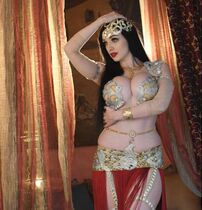 Check out her website or follow her on Facebook, Instagram or YouTube to keep up with all her latest stuff! Did You Like This Interview?Did you enjoy learning more about this dancer? What other dancers would you like to see new interviews from? Hit "like" below and leave a comment with your feedback letting us know!
If you liked this article, you can visit our blog map to find other posts about belly dance and other related topics. Or subscribe to our newsletter, YouTube channel, Facebook and Instagram pages to be the first to see more content from SharqiDance!
2 Comments
Today our guest writer and Sha3bi Queen, Aasiyah, dancer and owner of Sehraya Entertainment tells us about this popular genre of Egyptian music, its most famous and influential artists and what to consider when performing to it Sha3bi: More Than Just "Popular" Let us discuss something that is very popular in the belly dancing world. It is all over Instagram and YouTube. Everyone dances to it. The music is one of my absolute favorites and I annoy my husband almost daily by playing it ad nauseam. I am talking, of course, about shaabi. More often than not, when many teachers (western and non-western alike) are asked to explain shaabi, they simply say that shaabi is music that is popular at a certain point in time or that it is pop music. This explanation is oversimplified and misleading. The word shaabi (شعبي, or sha3bi if read phonetically) translates to “my people” but in the context of musical genres, sha3bi would best be translated as ‘folky’ or ‘popular’. And it should come as no surprise that sha3bi music is housed under the umbrella of pop music. Adaweya, King of Sha3bi
Watch Adaweya in Action In this vintage video (1970's?), Ahmed Adaweya sings his popular song Zahma Beyond Ahmed Adaweya Long before Adaweya, neighborhoods used to have their local sha3bi guy entertain at parties and street weddings, and singers like Mohamed Roushdy, Mohamed Abd el Motileb, and Mohamed al 3ezaby were recording sha3bi music long before Adaweya. Nevertheless, Adaweya was a revolutionary in the genre, and is the king of the modern sha3bi we love today. While sha3bi music is of course popular, pop music and sha3bi are not the same. Amr Diab is a pop singer, but he never sings sha3bi. Hakim IS a sha3bi singer who is also sometimes a pop singer. Emad Ba3ror is only a sha3bi singer. Music style and composition as well as use of language and voice are what distinguish a sha3bi singer from a pop singer.
Sha3bi Music Today Recently, like all art, sha3bi music has gone through quite a revolution since the glory days of Adaweya. Current sha3bi has been marked by songs like Sigara Bunni (Brown Cigarette) by Mahmoud al Husseni, arguably one of the most iconic sha3bi songs of the past two decades. Most sha3bi singers now utilize a synthesizer or electronic band over a full band or orchestra (Hakim is a major exception, his band is huge and fantastic!) and many singers are incorporating rap and/or other western style music into their production. Sha3bi music can cover many things--love, politics, life, marriage, fruit, etc--and can also be full of double entendre. Sha3bi singers often talk about controversial and taboo topics such as drugs and sex, as is common for example for popular hip hop artists here in the US. Singers like Ahmed Sheba, Abd el Basset Hamouda, and Shaabola are known for their heavy and politically laced songs while Mahmoud el Lithy, Bosy, and Saad el Soghayar generally keep things light and fun. Some of my favorite sha3bi singers are Ahmed Sheba, Emad Ba3roor, Abd el Basset Hamouda, and Reda el Bahrawy. I also really recommend checking out a truly fantastic sha3bi keyboardist, Abd el Salam. Watch this video translation of Sigara Bunni: but ONLY if you're 18 or older ;) and ready for a laugh Dancing to Sha3bi Music As a dancer, it is important to remember that sha3bi is a form of lyricism and music; it is not a dance style. When performing to sha3bi music, the dance form appropriate to use is raqs baladi (baladi dance). Raqs baladi is very similar to raqs sharqi (Oriental dance, more commonly known as "belly dance") in movement, but differs in the delivery and intent. Most sha3bi tells a story of some kind and it always adds an extra element to a performance when the dancer can add to that story. Many dancers, myself included, prefer to wear a dress or galabeya when performing to a sha3bi piece; however, it is fine to wear a bedlah or cabaret costume when incorporating a sha3bi piece into a full set. Movement is earthy, raw, and sometimes lazy. It is important to know the song lyrics not only to avoid potential embarrassment, but to be able to communicate the story in the song. At its heart, sha3bi music is expressive and fun. Even when the singer is lamenting about the rage of poverty and inequality in the world, everyone loves sha3bi! About Today's Author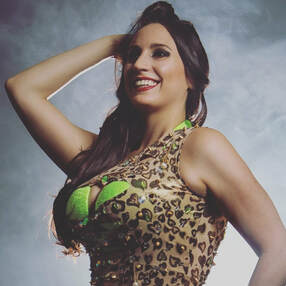 Aasiyah is a professional Raqs Sharqi performer, instructor, and artistic company director who specializes in modern Egyptian technique. Known for fusing masculine and feminine performance elements, her authentic style has been developed from years of dedicated study of Egyptian dance, culture, and language. While appreciative of the classic styles of the past, Aasiyah is constantly pushing to stay relevant of modern Cairo life and the influences it has on the dance. You can find out more about Aasiyah and follow her work by visiting her website, https://www.aasiyahdance.com/ or her instagram pages, @Aasiyah_Dance and @Sehraya_Entertainment. Was This Post Helpful?Did you learn something from this post? Would you like to learn more about sha3bi? Hit "like" below and leave a comment with your feedback!
If you liked this article, you can visit our blog map to find other posts about Arabic music, belly dance and other related topics. Or subscribe to our newsletter, YouTube channel, Facebook and Instagram pages to be the first to see more content from us! Happy learning, and happy dancing! |
AuthorYamê is a Brazilian-American View Posts By CategoryIf you'd like to read more articles by Yamê or SharqiDance's guest authors, please view our blog map here.
Archives
January 2024
|
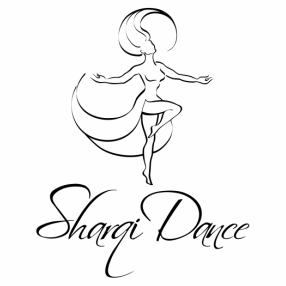
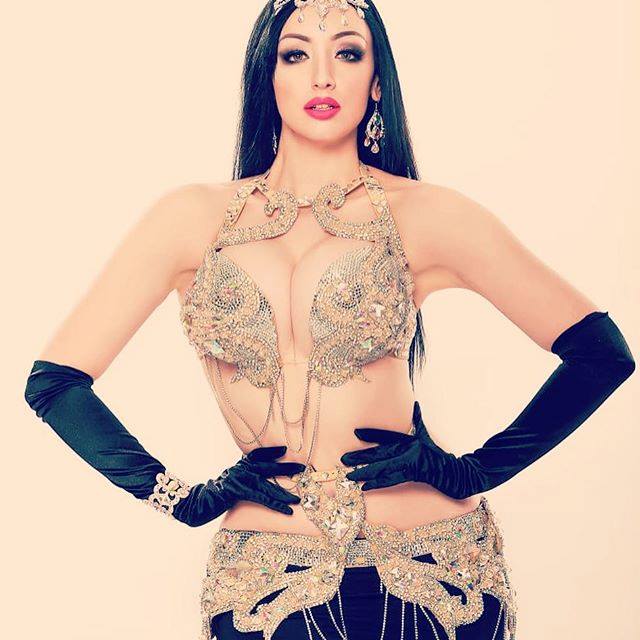
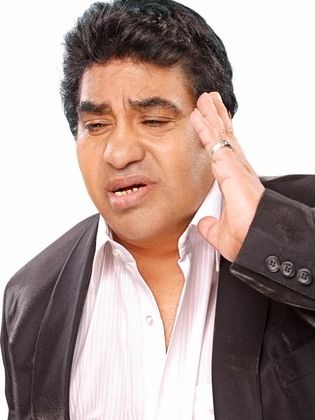
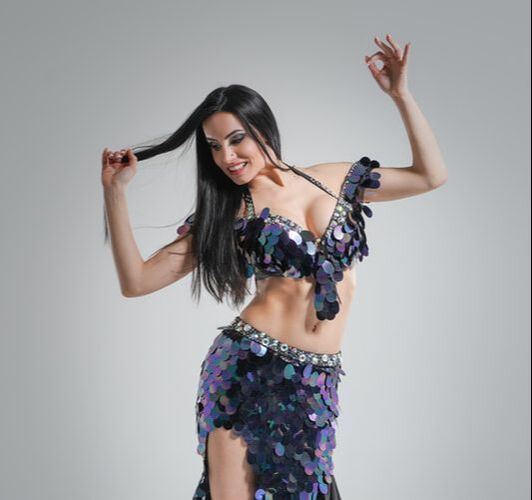
 RSS Feed
RSS Feed